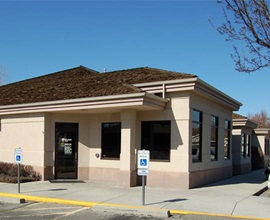Dr. Pate’s Prescription for Change
Enhancing patient visits through pre-visit planning


Pre-visit planning is driving value for both our patients and their physicians. It allows us to provide better care and preventive services and makes office visit more productive and effective.
Here is St. Luke’s Communications Coordinator Chereen Langrill with more on how we went about designing pre-visit planning.
- David C. Pate, M.D., J.D.

In early May, St. Luke’s reached another milestone in the journey to improve care by redesigning the way a patient’s visit is planned.
Pre-visit planning focuses on Medicare patients who come to a St. Luke’s primary care clinic for a wellness exam. Much like St. Luke’s work to shape patient-centered scheduling, this project involved taking a fresh look at existing processes and involved physicians and others in building a consistent and improved experience.
A meaningful patient visit requires significant work, including documentation and reviewing updated patient information and the results of any lab tests related to the visit. Historically, this has fallen to providers at the time of visits.
Pre-visit planning changes that philosophy by ensuring that the patient’s information is complete and current prior to the visit. This enables physicians to have quality conversations about care plans while patients are in the office, reduces the need for additional visits and improves the quality of care, according to Daniel Silver, St. Luke’s senior director of physician services operations improvements.
“For the provider, it’s like walking in for a test they have studied and prepared for. The result is much better for the patient,” Silver said.
The project team, including representatives from physician services operations improvement, St. Luke’s Health Partners, health information management (HIM), and integrated healthcare technology (IHT), started by hosting an intensive two-day session with providers to analyze patient visits and learn every detail that goes into them – from before the patient meets with the physician until the visit is over – to determine how to improve the experience.
It was clear that providers were buried in administrative work that often cut into time spent with patients. That realization sparked an idea to create a new centralized pre-visit planning (PVP) team consisting of HIM, registered nurses and licensed practical nurses. That group supports providers by pulling together all the information for patients visiting within the next two weeks.
As part of the workflow, the PVP team:
- Calls the patient to verify conditions, medications and other information that is important for physicians to know prior to the visit.
- Facilitates the completion of the health risk assessment and coordinates any lab work or screening so results are ready in time for the visit.
- Prepares the patient’s chart, noting chronic conditions and identifying any potential care gaps.
- Conducts chart reviews after the appointment, ensuring important information has been noted or updated.
This process was officially launched with St. Luke’s Clinic – Mountain View Medical Center in May 2018.
“We had a great partnership between our working team and providers,” said Lauren Goodell, a member of the team that worked to design the new visit flow. “Through an immense amount of collaboration, we have been able to push past obstacles we weren’t initially sure we could overcome and are now seeing great results.”
Pre-visit planning focuses on Medicare patients because providers must meet numerous requirements as part of a patient’s wellness visit. Those requirements involve addressing safety measures, such as fall prevention, along with preventive measures, such as blood pressure or medication reconciliation. It’s heavy in paperwork and requires multiple questions, all of which pull providers away from quality face time with the patients they are there to help.
“The aim of this is to address the overwhelming work that needs to be done to provide quality of care and identify care gaps,” said Dr. Gertjan “Jerry” Mulder, a family medicine physician at St. Luke's Clinic - Mountain View Medical Center. “It’s just too much to do in a patient encounter.”
Prevention is an important part of pre-visit planning. By addressing issues on the front end – such as safety and health risks – things are less likely to fall through the cracks. Patients are less likely to be hospitalized for issues such as a heart attack, stroke or a broken bone caused by a fall.
As part of the process improvement, frequency of visits will be examined. St. Luke’s schedulers will reach out to Medicare patients who haven’t been keeping up with wellness visits.
“We want to encourage those patients to schedule an annual exam because it helps them avoid preventable diseases and keeps them out of the emergency department,” Silver said. “It is about partnering with patients to improve their overall health, which is what we care about the most.”
Because of this new process, a nurse at the Mountain View clinic was able to connect with a patient who had severe depression.
“I was able to see the patient the next day and spend more time addressing that issue,” said Dr. Ricky Axtell, a family medicine physician at St. Luke’s Clinic - Mountain View Medical Center. “The work had already started the day before, because the patient was able to access those resources.”
Now that the pilot phase is coming to a close, the new process will begin rolling out to other St. Luke’s primary care clinics by the end of summer 2018.
Summer Johnson, clinic manager, worked closely with Silver, Goodell and the project team in the months leading up to the pilot. The result has been noticeable for those working on the front lines, she said.
“We are giving the patient a nice, clean view of what they should expect when they come into the office,” Johnson said. “We are offering better patient care now.”
About The Author

Chereen Langrill was formerly a communications coordinator for St. Luke’s Health System.


